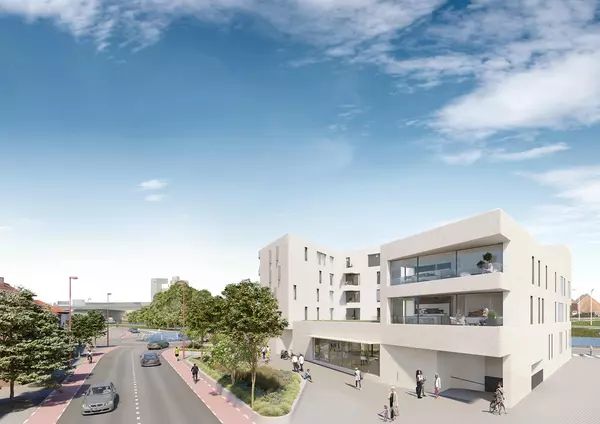Trump issues executive order: Emergency price relief on housing
Latest update: Jan. 20 at 9:15 pm central time: added specific information about emergency price relief for housing.
What are President Trump’s priorities for housing in his second term? That’s the burning question for professionals in real estate, mortgage, title, appraisal and homebuilding — and the answer started to take shape on the president’s first day in office Monday. By Monday night, Trump issued this memorandum on his executive order tackling inflation and housing relief:
“I hereby order the heads of all executive departments and agencies to deliver emergency price relief, consistent with applicable law, to the American people and increase the prosperity of the American worker. This shall include pursuing appropriate actions to: lower the cost of housing and expand housing supply; eliminate unnecessary administrative expenses and rent-seeking practices that increase healthcare costs; eliminate counterproductive requirements that raise the costs of home appliances; create employment opportunities for American workers, including drawing discouraged workers into the labor force; and eliminate harmful, coercive “climate” policies that increase the costs of food and fuel.”
Specific to housing, the memo states: “Moreover, many Americans are unable to purchase homes due to historically high prices, in part due to regulatory requirements that alone account for 25 percent of the cost of constructing a new home according to recent analysis.
“In sum, unprecedented regulatory oppression from the Biden Administration is estimated to have imposed almost $50,000 in costs on the average American household, whereas my first-term agenda reduced regulatory costs by almost $11,000 per household. It is critical to restore purchasing power to the American family and improve our quality of life.”
The day began with Trump’s inaugural address, which was focused on making America great again, but wasn’t specific to housing. “From this moment on, it’s going to be America First. Every decision on trade, on taxes, on immigration, on foreign affairs, will be made to benefit American workers and American families,” the president said in his address.
Trump has pledged to sign up to 100 executive orders on his first day in office, which can be grouped into these categories:
- Immigration: 10 executive orders on border security and illegal immigration, including a national border emergency declaration
- DEI/ defining gender: Ending DEI programs in government, defining two sexes.
- Energy/Climate Change: Declaring a national emergency on energy, withdrawing from the Paris Accord.
- Inflation: See above.
- Miscellaneous (renaming the Gulf of Mexico, extending the deadline for the TikTok ban, etc.)
We’ll keep an eye on the specifics of those orders as they roll through today and this week, as some — like inflation initiatives — could directly affect housing. But Trump’s housing policies can also be seen in his picks for federal departments and regulatory agencies.
Trump is famously anti-regulation and has promised to look at every government agency and regulatory body to see where he can make cuts. On Monday night, Trump officially created the Department on Government Efficiency (DOGE) by executive order to carry out this vision, headed by Elon Musk. (Trump accomplished this by renaming the United States Digital Service, created in 2014 by the Obama administration. The DOGE effort was facing multiple lawsuits because it was operating under unofficial status).
Monday evening Trump signed an executive order to freeze government hiring and a “regulatory freeze” preventing the creation of new federal regulations, NPR reported.
Here’s what his plan to reshape federal agencies and regulators and influence economic factors looks like so far.
HUD
HUD was identified in the Project 2025 presidential transition project as an agency targeted for massive budget cuts. The author of the HUD section was Trump’s former HUD Secretary Ben Carson, who wrote that HUD needed a “reset” which would include “a broad reversal of the Biden administration’s persistent implementation of corrosive progressive ideologies across the department’s programs.”
Trump’s nominee for HUD Secretary in this term is Scott Turner, who worked very closely with Carson in Trump’s first term. Turner is the former executive director of the White House Opportunity and Revitalization Council (WHORC), a member of the America First Policy Institute, a former professional football player and a Texas state representative.
During Trump’s first term, Turner oversaw roughly $50 billion of private investment in opportunity zones. In his confirmation hearing last week, Turner emphasized that he would be looking very closely at the HUD budget to get rid of any inefficiencies.
- Trump’s HUD pick will aim to ‘maximize’ HUD budget if confirmed
- Lawmakers, housing groups react to Scott Turner’s HUD confirmation hearing
- Ahead of Senate hearing, Trump HUD pick faces a familiar foe: Elizabeth Warren
- Trump names Scott Turner as new HUD Secretary
- Will Trump, Project 2025 kill HUD?
FHFA
Trump announced his pick for FHFA director just last week: Bill Pulte. Pulte is the grandson of the late homebuilding icon William Pulte and is the founder of Pulte Capital Partners, which focuses on construction investments in “middle-market companies and lower-priority divisions of national companies,” according to the company’s website.
The FHFA is charged with supervision, regulation, and housing mission oversight of Fannie Mae, Freddie Mac, and the Federal Home Loan Banks, to make sure they fulfill their mission to serve as a reliable source of liquidity and funding for housing finance and community investment. What the agency’s goals and priorities will be under Pulte is not yet clear. With his family ties to homebuilding, Pulte is seen as a “friend to the industry,” according to investment banker and author Chris Whalen in an interview with HousingWire.
- Trump nominates Bill Pulte for FHFA Director
- Treasury amends PSPAs for ‘orderly’ exit of GSEs from conservatorship
- FHFA finalizes new goals for Fannie Mae, Freddie Mac
The fate of the CFPB
The Consumer Financial Protection Bureau (CFPB) has been a Trump target since the last time he was in office. Ramping up the administration’s rhetoric this time around, Musk called for the CFPB to be “deleted” in November. That sentiment is apparently making it hard to find someone who wants Rohit Chopra’s job leading the bureau. The Financial Times reported that multiple “experienced candidates” have opted not to enter the selection process when reached about potentially serving in the role.
Trump’s pick to lead the CFPB in his first term, Kathy Kraninger, was supported by mortgage industry groups during her term and was picked to lead the Florida Bankers Association after she resigned as CFPB director when Biden won.
- Trump’s search for watchdog chiefs could be complicated by promises of regulatory cuts
- CFPB defenders Chopra, Warren, advocate for bureau in the new Trump era
- Musk calls for the CFPB to be ‘deleted’
Tariffs
Trump didn’t immediately levy tariffs on Monday, but issued an executive order “directing federal agencies to begin studying a broad list of trade issues that could ultimately result in taxes on goods from China, Canada, Mexico and other countries in the coming months,” the New York Times reported. However, the Times also reported that Trump, answering a reporter’s question about tariffs Monday evening, said he was planning to enact 25% tariffs on Canada and Mexico starting Feb. 1.
During his campaign and since the election, Trump has proposed tariffs on imports from a number of countries, including tariffs of 60% to 100% for products imported from China and a 25% tariff on all Mexican goods.
Within the housing industry, homebuilders are most likely to feel the burn from tariffs. During Trump’s first term, tariffs on Canadian softwood lumber led to a surge in costs for homebuilders. Back in 2018, the NAHB estimated that the tariffs added nearly $9,000 to the cost of constructing a single-family home. The impact on lumber prices was dramatic, with costs rising close to 80% year over year, in part due to the taxes.
HousingWire Lead Analyst Logan Mohtashami pointed out in a recent podcast that President Trump is more of a “tactical tariff person rather than a full blown trade war person. In his previous administration, he waited until the corporate tax cuts were in, then went into a more tactical trade war.”
Categories
Recent Posts










